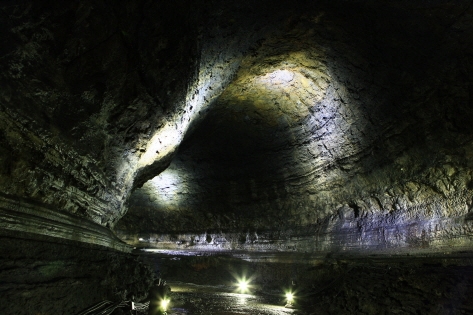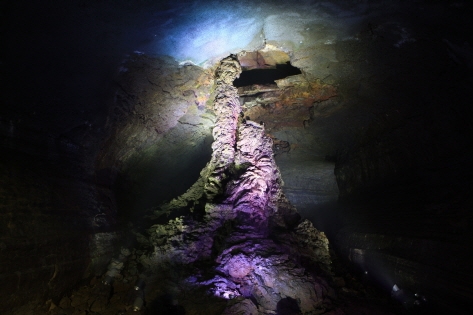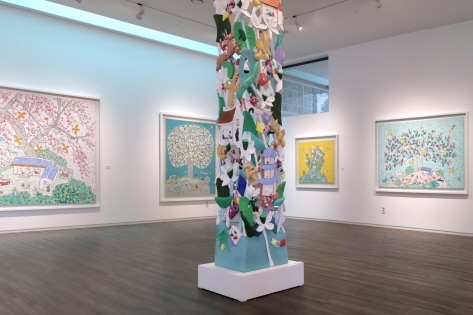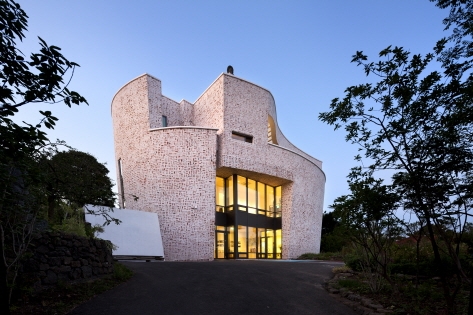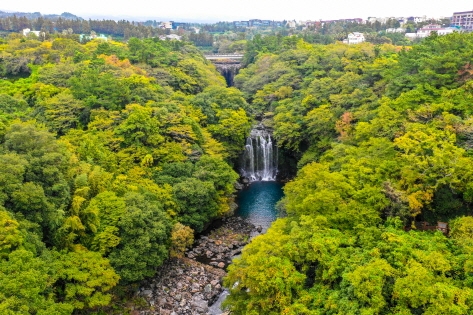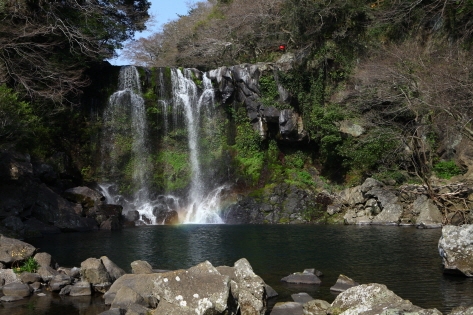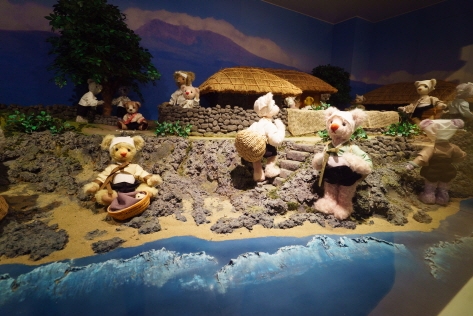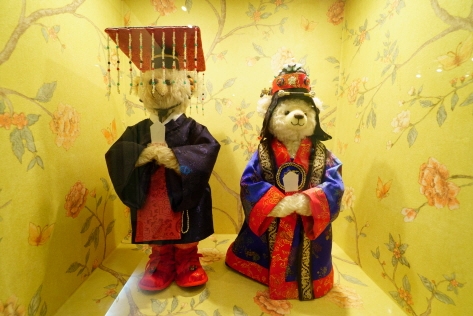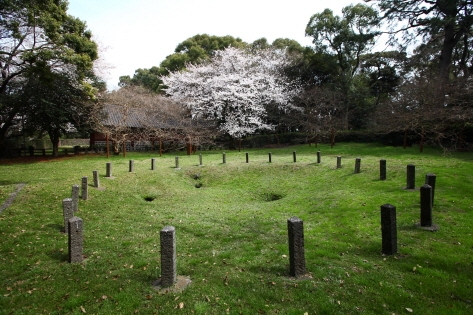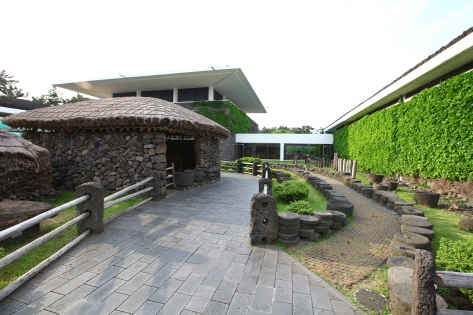Travel Highlights
-
-
-
Beginners’ Guide to: Jeju Island
-
08/04/2022
17.2K
-
-
-
-
-
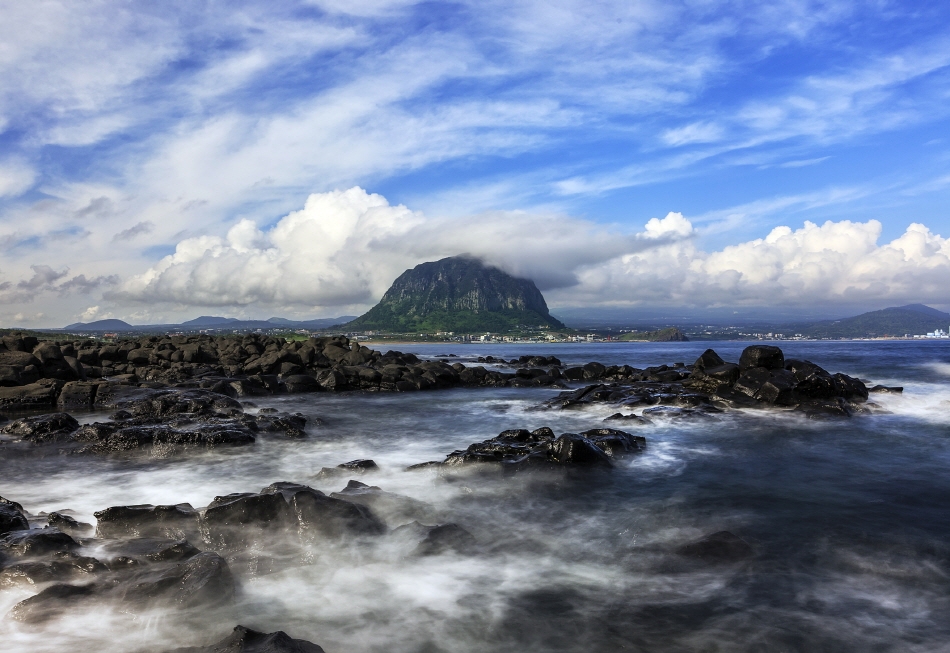
Located southwest of the Korean Peninsula is the largest island of Korea, Jeju Island. The island is one of the most relaxing vacation spots found in Korea thanks to its unique local atmosphere and beautiful natural environment. The volcanic lava tubes that make up nearly 10% of the island’s area are a designated UNESCO World Natural Heritage Site.
Seongsan Ilchulbong Tuff Cone, Manjanggul Lava Tube, and Hallasan National Park are must-see sights. Additional attractions include forests, waterfalls, and parasitic cones. With so many beautiful things to see, it can be hard work to plan your itinerary. Following our guide, you can enjoy a stress-free, relaxing retreat, no matter which part of Jeju you choose to visit.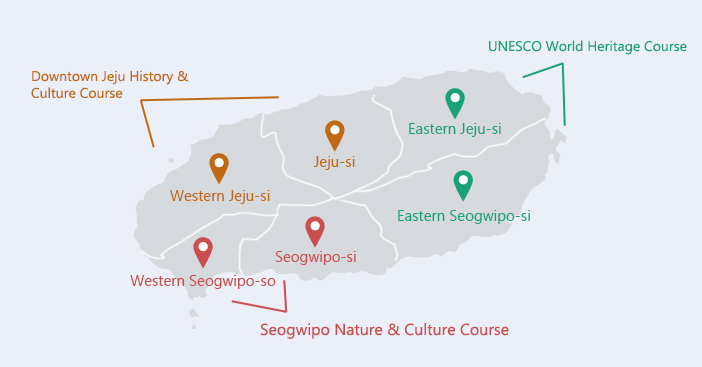
UNESCO World Heritage Course
Rising from the sea, Seongsan Ilchulbong Tuff Cone
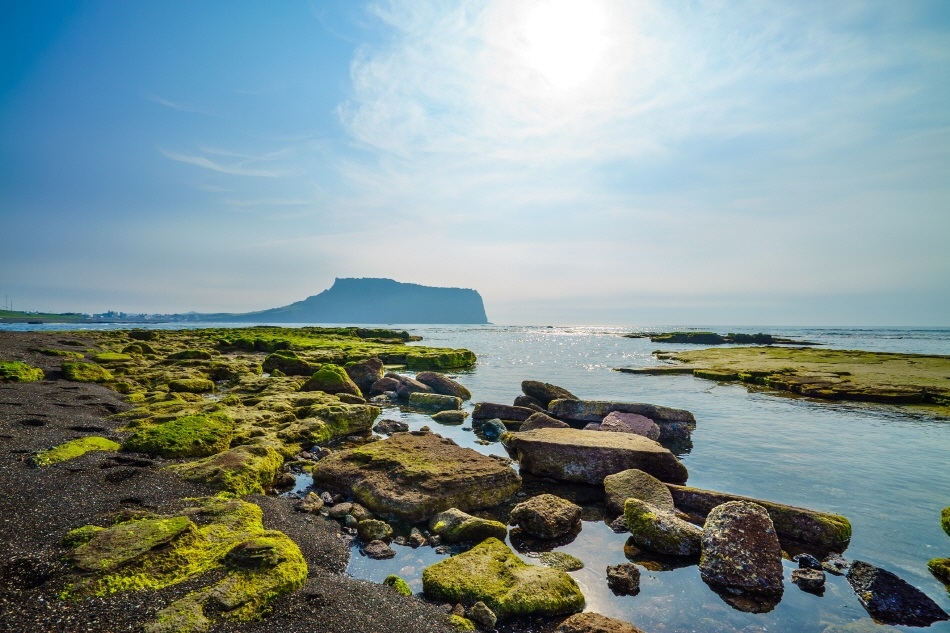
Seongsan Ilchulbong Tuff Cone, a landmark attraction of Jeju, was formed about 5,000 years ago from an eruption of magma on the ocean floor. It is especially famous as a sunrise viewing spot, known to be one of the top ten exquisite sceneries of Jeju Island.
Besides viewing the sunrise, Seongsan Ilchulbong Tuff Cone is also known to be an excellent trekking spot. The Seongsan-Ojo Trail connects two villages by crossing the peak. Another popular trail, the Jijil Trail, offers a closer look at the UNESCO-designated geopark as well as Jeju’s local culture. Walking along one of these paths is recommended to really experience the area; walking all the way to the summit offers views of both the vast volcanic crater in the center and the blue ocean surrounding the area. To complete your trip, head to Seongsanpo Port to watch haenyeo (female divers) at work.- Address: 284-12, Ilchul-ro, Seogwipo-si, Jeju-do (제주특별자치도 서귀포시 성산읍 일출로 284-12)
- Operating hours: March-September 07:00-20:00 (Last admission 18:50) / October-February 07:30-19:00 (Last admission 17:50)
- Admission: Adults 5,000 won / Children 2,500 won / Preschoolers Free
* Adults (ages 25 & older) / Children (ages 7-24) / Preschoolers (ages 6 & younger) - Haenyeo performance: 13:00, 15:00
* No performance on the first Monday of every month
* Schedule subject to change depending on weather & diver conditions.
Feel the breeze at Cape Seopjikoji
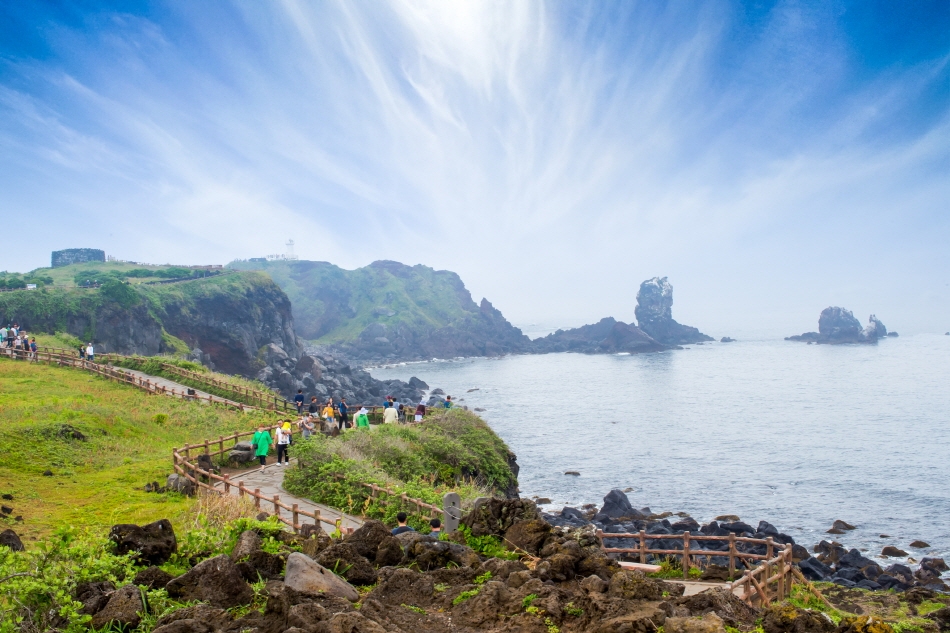
A short drive from Seongsan Ilchulbong Peak will take you to Cape Seopjikoji. The name comes from the Jeju dialect for a “Cape of Small Land” due to its peculiar cliff formation that protrudes into the ocean. The picturesque harmony of the hill and ocean attract tourists all year round. You might even be able to sight Jeju ponies grazing on the field of grass.
Walking northeast along the cliff, you will arrive at Bulgeunoreum Parasitic Cone, offering an exquisite view of a white lighthouse with the dark blue sea in the background. Additional noteworthy attractions of Cape Seopjikoji are the Glasshouse and Yumin Art Gallery, two masterpieces designed by world-renowned architect Ando Tadao. The two buildings blend in remarkably well with the surrounding nature.- Address: 107, Seopjikoji-ro, Seogwipo-si, Jeju-do (제주특별자치도 서귀포시 성산읍 섭지코지로 107)
- Operating hours: Open 24 hr
* Entrance after sunset not recommended - Admission: Free
Observe the beauty of ridges at Yongnunioreum Parasitic Cone
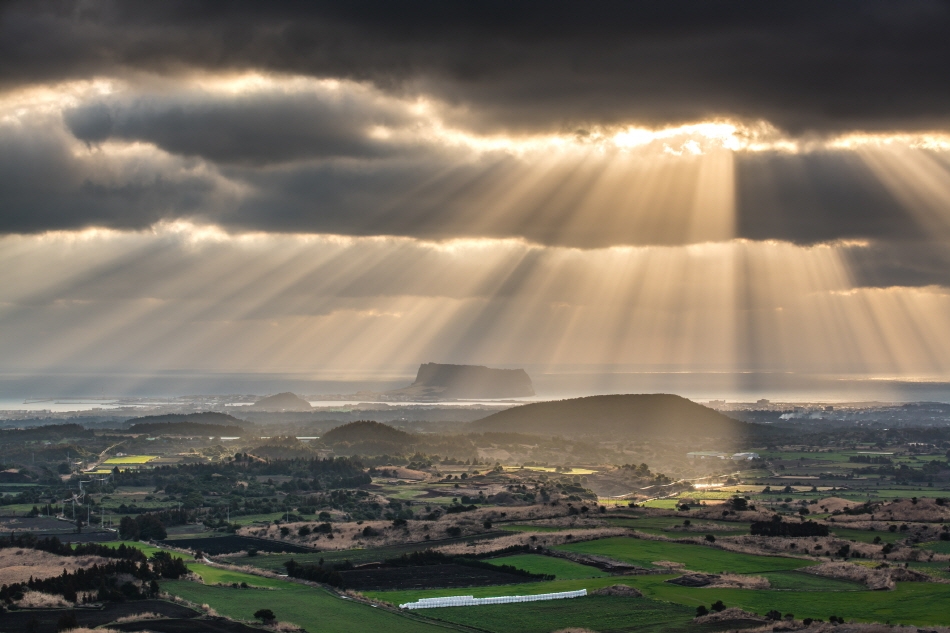
You can’t say you’ve been to Jeju Island without visiting one of the many oreum, Jeju dialect for parasitic cone. There are approximately 360 oreum scattered throughout Jeju. Among these hundreds of oreums, Yongnunioreum Parasitic Cone is undoubtedly the most well-known. It’s not far from Seongsan Ilchulbong Tuff Cone and has a moderately gentle slope, providing a fairly convenient trail for trekking.
Both Seongsan Ilchulbong Tuff Cone and Udo Island can be seen from the peak of Yongnunioreum, offering an unforgettable panorama. The view of curvy ridges along with the ocean also serves as an excellent backdrop for memorable photos. If you are looking for a perfect spot for souvenir photos, be sure to check out Yongnunioreum Parasitic Cone.- Address: San 28, Jongdal-ri, Jeju-si, Jeju-do (제주특별자치도 제주시 구좌읍 종달리 산28)
- Operating hours: Open 24 hr
* Entrance after sunset not recommended - Admission: Free
* Limited access until January 31, 2023 for wildlife protection
A long-lasting garden of nutmeg yews, Bijarim Forest
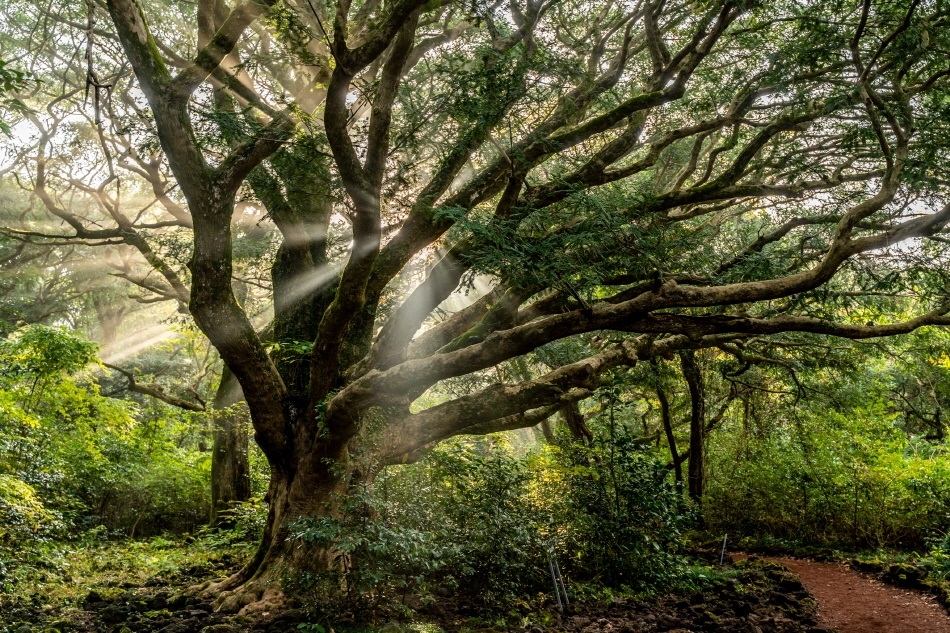
In contrast to Yongnunioreum’s open vistas, Bijarim Forest is an ideal spot for a relaxing forest retreat. The dense forest is home to hundreds of bija (nutmeg yew) trees, and is the largest forest in the world to be made up of one plant species. Most of the trees in the forest have lived for 500 to 700 years, earning the forest the nickname “Forest of a Thousand Years.” Must-see sights while at Bijarim Forest are none other than the 800-year old tree and the conjoined nutmeg yews.
- Address: 55, Bijasup-gil, Jeju-si, Jeju-do (제주특별자치도 제주시 구좌읍 비자숲길 55)
- Operating hours: 09:00-18:00
* Last admission 17:00 - Admission: Adults 3,000 won / Children 1,500 won / Preschoolers Free
* Adults (ages 25 & older) / Children (ages 7-24) / Preschoolers (ages 6 & younger)
Enter the mysterious underground castle, Manjanggul Lava Tube
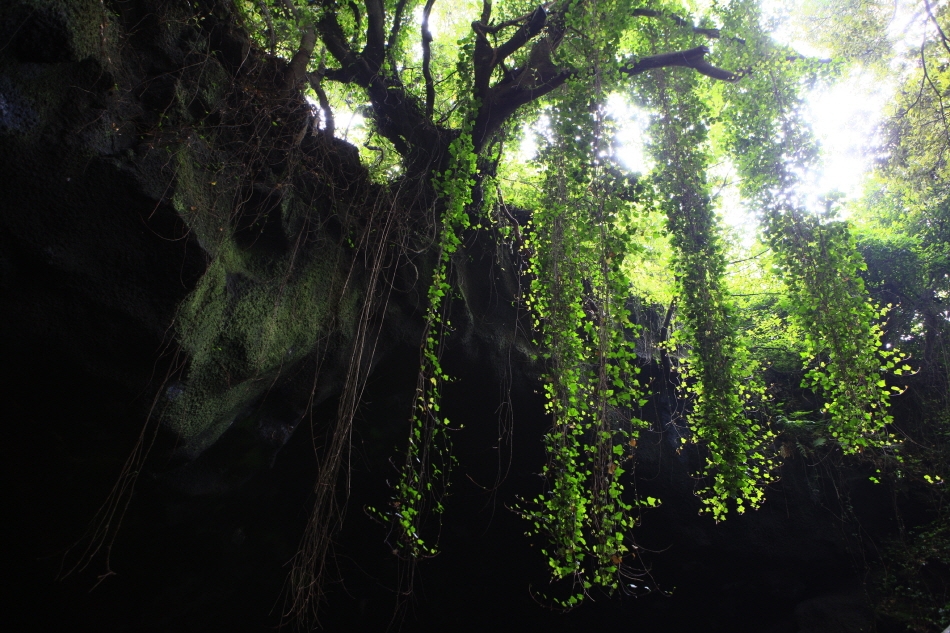
Of all the oreum on Jeju, Geomunoreum is the only parasitic cone to be designated as a UNESCO World Natural Heritage site. The oreum holds over 20 caves within its body, although only Manjanggul Lava Tube is open to the public. With its profoundly mysterious and grand appearance, taking a step inside the cave is like stepping into Hades’ underworld. Follow the tunnel of articulate lava rock formations, and you will soon reach a giant rock pillar that indicates the end of the cave. The cave’s temperature fluctuates within 11-21℃ regardless of season, allowing visitors to enjoy the magnificent cave all year round.
- Address: 182, Manjanggul-gil, Jeju-si, Jeju-do (제주도 제주시 구좌읍 만장굴길 182)
- Operating hours: 09:00-18:00
* Last admission 17:00
* Closed first Wednesday of every month - Admission: Adults 4,000 won / Children 2,000 won / Preschoolers Free
* Adults (ages 25 & older) / Children (ages 7-24) / Preschoolers (ages 6 & younger)
Seogwipo Nature & Culture Course
Enjoy artwork along the ocean, Jeongbangpokpo Falls and Waljong Art Gallery
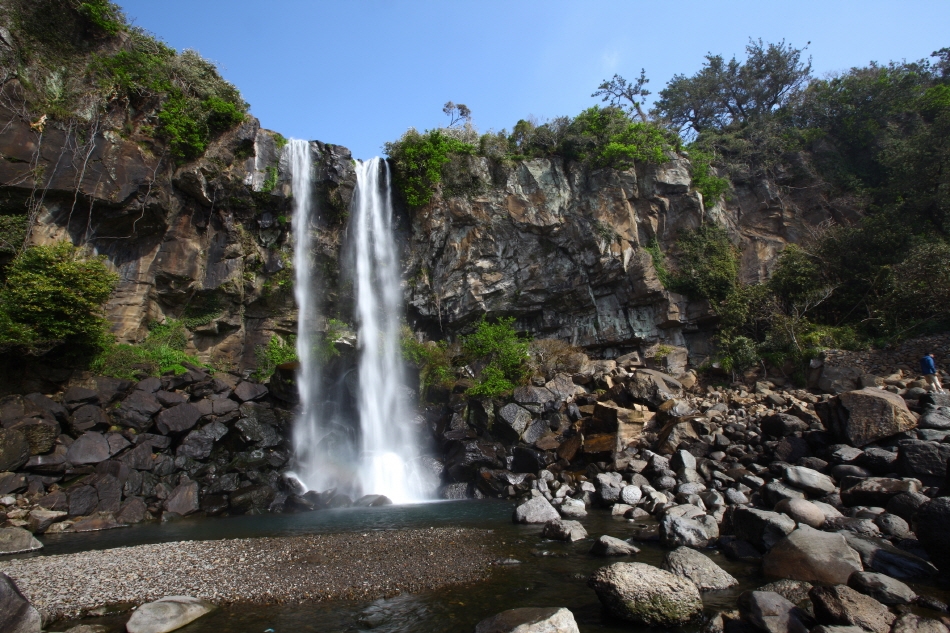
Seogwipo, which includes the entire southern half of Jeju, exhibits a great amount of sunshine and warm temperatures, attracting crowds of tourists all year round. One attraction many people choose to visit is Jeongbangpokpo Falls, one of the top three waterfalls on Jeju Island. The water falls 23 meters straight down off the cliff and into a pool before flowing to the sea.
Located on the cliff behind Jeongbangpokpo Falls is Waljong Art Gallery. This gallery is dedicated to the Korean artist Lee Wal Jong, who settled in Jeju decades ago. The gallery is filled with his inspiring artworks, expressing the beauty of Jeju in his own unique way. The strategic location and glass-walled second floor also offer visitors an amazing view looking over the sea.- Address: 37, Chilsimni-ro 214beon-gil, Seogwipo-si, Jeju-do (제주특별자치도 서귀포시 칠십리로214번길 37)
- Operating hours: 09:00-18:00
* Last admission 17:40
* Hours may vary according to estimated sunrise & sunset time - Admission: Adults 2,000 won / Children 1,000 won / Preschoolers Free
* Adults (ages 25 & older) / Children (ages 7-24) / Preschoolers (ages 6 & younger)
Waljong Art Gallery
- Address: 30, Chilsimni-ro 214beon-gil, Seogwipo-si, Jeju-do (제주특별자치도 서귀포시 칠십리로 214번길 30)
- Operating hours: 10:00-18:00
* Last admission 17:30
* Closed Mondays - Admission: Adults 5,000 won / Children & senior citizens 3,000 won / Preschoolers Free
* Adults (ages 19-64) / Children (ages 7-18) / Senior citizens (ages 65 & older) / Preschoolers (ages 6 & younger) - Website: walartmuseum.or.kr (Korean only)
Nature-made art, Jusangjeolli Cliff and Cheonjeyeonpokpo Falls
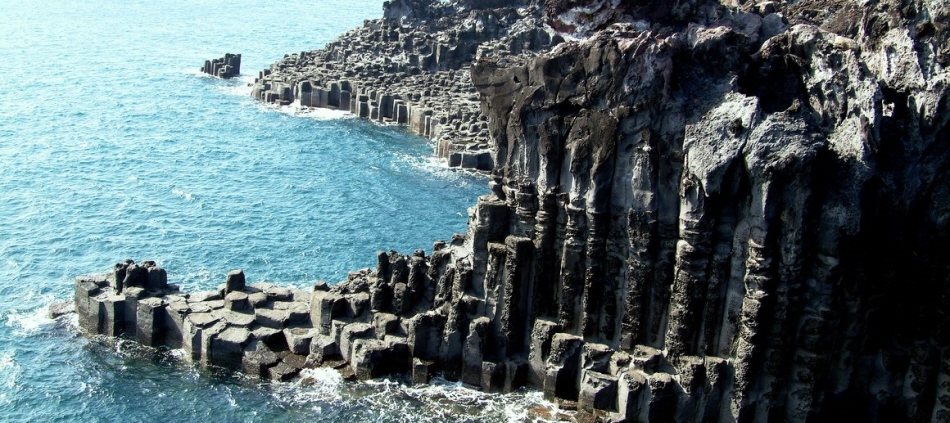
Jeju Jungmun Resort is blessed with not only beautiful natural scenery but also with numerous entertainment and convenience facilities catering to both domestic and international tourists. Jusangjeolli Cliff, near the International Convention Center Jeju, delivers a sight to behold with its gigantic rock pillars running along the costal line. Cheonjeyeonpokpo Falls, a three-tiered waterfall, is another attraction not to be missed in Seogwipo. While the first section of the waterfall is only active after rain, the second and third sections are active all year round.
- Address: 36-30, Ieodo-ro, Seogwipo-si, Jeju-do (제주특별자치도 서귀포시 이어도로 36-30)
- Operating hours: 09:00-18:00
* Hours may vary according to estimated sunset time - Admission: Adults 2,000 won / Children 1,000 won / Preschoolers Free
* Adults (ages 25 & older) / Children (ages 7-24) / Preschoolers (ages 6 & younger)
- Address: 132, Cheonjeyeon-ro, Seogwipo-si, Jeju-do (제주특별자치도 서귀포시 천제연로 132)
- Operating hours: 09:00-18:00
* Hours may vary according to estimated sunset time - Admission: Adults 2,500 won / Children 1,350 won / Preschoolers Free
* Adults (ages 25 & older) / Children (ages 7-24) / Preschoolers (ages 6 & younger)
Rekindle childhood memories at the Teddy Bear Museum
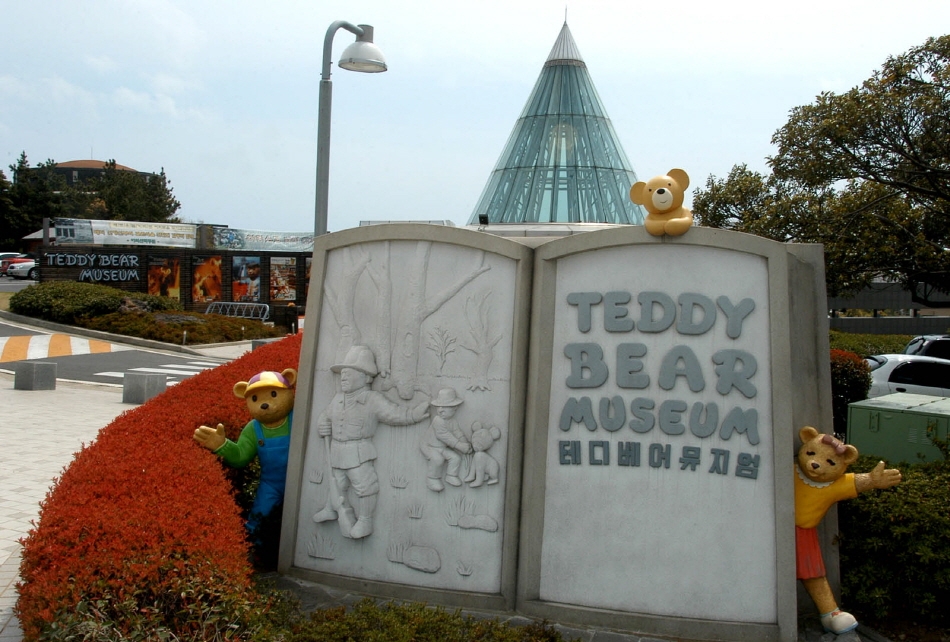
Another favorite tourist attraction at Jungmun Resort is the Teddy Bear Museum. The museum boasts quite an impressive collection of teddy bears from all over the world. Exhibition halls are designed with different themes, such as 20th century history exhibition and fable parodies, all portrayed by teddy bears. The Teddy Bear Museum is a popular museum loved by visitors of all ages, recommended as an excellent place to visit with friends, families, or even on a date. The museum also has a souvenir shop, cafeteria, and a park that offers a splendid view.
- Address: 31, Jungmungwangwang-ro 110beon-gil, Seogwipo-si, Jeju-do (제주특별자치도 서귀포시 중문관광로110번길 31)
- Operating hours: 09:00-18:00
* Last admission is 17:30 - Admission: Adults 12,000 won / Teenagers 11,000 won / Children & senior citizens 10,000 won / Infants free
* Adults (ages 19-64) / Teenagers (ages 13-18) / Children (ages 3-12) / Senior citizens (ages 65 & older) / Infants (ages 2 & younger) - Website: www.teddybearmuseum.com (Korean, English, Chinese)
Downtown Jeju History & Culture Course
Discover the history and culture of Jeju Island
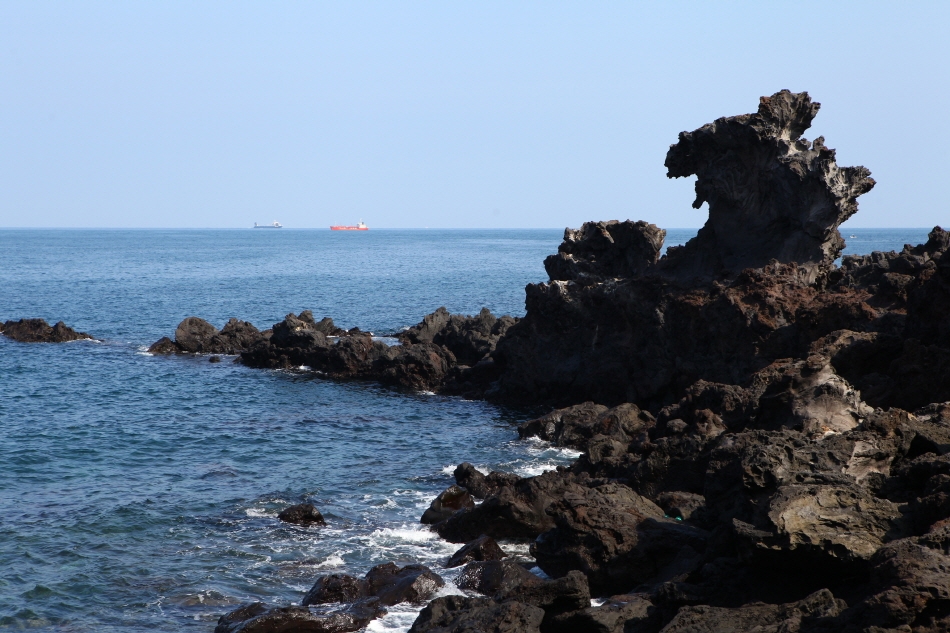
Yongduam Rock, a top tourist attraction in downtown Jeju, is one of the many natural wonders of Jeju Island. Formed by underwater lava millions of years ago, eons of weathering from the rain and wind have formed it into the likeness of a dragon's head.
After visiting Yongduam Rock, head down to the Jeju Folklore & Natural History Museum to learn about the development of the island people and culture over time. Not only does Jeju Island have its own dialect, it also has a distinct culture that separates it from the rest of mainland Korea, all of which you can see and enjoy from a quick tour of the museum. Right next to the museum is Samseonghyeol Shrine, a religious site that is also the birthplace of Jeju's ancient mythology. The old trees and traces of the past create a devotional atmosphere.- Address: Yongduam-gil, Jeju-si, Jeju-do (제주특별자치도 제주시 용두암길)
- Operating hours: Open 24 hr
* Entrance after sunset not recommended - Admission: Free
Jeju Folklore & Natural History Museum
- Address: 40, Samseong-ro, Jeju-si, Jeju-do (제주특별자치도 제주시 삼성로 40)
- Operating hours: 09:00-18:00
* Last admission 17:30
* Closed Mondays, New Year’s Day, Seollal (Lunar New Year’s Day) and Chuseok (Korean Thanksgiving Day) holidays, museum maintenance period (3 day period every half year) - Admission: Adults 2,000 won / Teenagers 1,000 won / Children & senior citizens Free
* Adults (ages 25 & older) / Teenagers (ages 13-24) / Children (ages 12 & younger) / Senior citizens (ages 65 & older) - Website: museum.jeju.go.kr (Korean, English, Chinese)
- Address: 22, Samseong-ro, Jeju-si, Jeju-do (제주특별자치도 제주시 삼성로 22)
- Operating hours: 09:00-18:00
* Last admission 17:30
* Open at 10:00 on New Year’s Day, the day of Seollal (Lunar New Year’s Day) and Chuseok (Korean Thanksgiving Day) - Admission: Adults 4,000 won / Teenagers 2,500 won / Children 1,500 won / Preschoolers Free
* Adults (ages 19 & older) / Teenagers (ages 13-18) / Children (ages 7-12) / Preschoolers (ages 6 & younger)
More Info
- Websites
- Jeju UNESCO World Natural Heritage Center: www.jeju.go.kr/wnhcenter (Korean, English, Chinese)
- Jeju Tourism Organization: www.visitjeju.net (Korean, English, Japanese, Chinese, Malay) - 1330 Korea Travel Hotline: +82-2-1330 (Korean, English, Japanese, Chinese, Russian, Vietnamese, Thai, Malay)
* This column was last updated in July 2022, and therefore information may differ from what is presented here. We advise you to check details before visiting.

